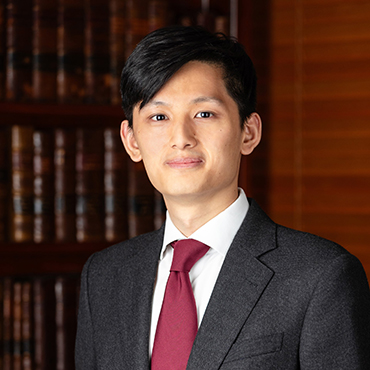香港特別行政區 v 甄霈霖 [2023] 4 HKC 338, [2022] HKCFI 3736 (Jay Koon)
Schweitzer Wong, Jonathan Ip and Jay Koon represented the appellant in 香港特別行政區 v 甄霈霖 [2023] 4 HKC 338, [2022] HKCFI 3736.
The appellant pleaded not guilty to a charge of ‘participating in a prohibited group gathering’, contrary to s 6(1)(a), (2) of the Prevention and Control of Disease (Prohibition on Group Gathering) Regulation (Cap 599G). The prosecution case was that at 7pm odd on 20 July 2020, because a resident of Sui Lun House, Siu Lun Court, Tuen Mun had been diagnosed of COVID-19 infection, PW1 and the personnel of a cleaning contractor arrived at the ground floor lift lobby of the building to carry out disinfection work. The appellant, as he was then the District Councillor of that district, was outside the front gate and asked PW1 whether the kaifongs had been informed; The appellant and some kaifongs followed another kaifong entering the lobby. PW1 was surrounded by many people and was repeatedly interrogated. PW1 responded by stating that she was only responsible for arranging disinfection work, and a notice had been issued, and she asked the appellant (who was not a resident) and other persons present at the scene (who had no business there) to leave. A male, who claimed to be an owner of a unit of the building, stated that he was the one who allowed the appellant to enter the lobby. Hence PW1 requested the appellant to register at the security checkpoint. PW1 went to 35/F for carrying out disinfection work. It took about ten minutes from her entrance into the lobby until arrival at 35/F, during which the persons present included the appellant, a person claiming to be an owner, Mr Ng (a resident), and two others. The appellant repeatedly questioned PW1, forcing her to explain; and Mr Ng also ordered PW1 to do so. At trial, the appellant did not testify and did not call any witness. The magistrate convicted the appellant of the charge. The appellant appealed against conviction, contending that the magistrate erred in holding that the lift lobby of the building was a ‘public place’ under the Prevention and Control of Disease (Prohibition on Group Gathering) Regulation, because there were a number of restrictions in the lobby entrance preventing non-residents and non-registered visitors from entering; residents were required to enter a passcode at the front gate, and visitors must have been invited by residents and must register at the security checkpoint before entering; security guards would not allow non-residents to enter the lobby; and members of the public, who wished to go to somewhere else of the building, must obtain approval of the security guards and register their identity.
Held, allowing the appeal, setting aside the conviction and sentence:
As the cases had shown, one of the essential considerations of whether a place was a public place was whether persons who had access were permitted to have access as members of the public or as persons in a specifically private capacity. Those who were permitted to have access by reason of their job duties had access as lawful visitors, which would not turn the place into a public place. A public place must be one that allowed access by members of the public as members of the public, not as persons in their private capacity. Upon considering the circumstances of the case, the wording used in the definition of ‘public place’ in the Prevention and Control of Disease (Prohibition on Group Gathering) Regulation (Cap 599G) and the legislative intent, the Court held that there was no reason to construe the relevant lift lobby of the building as a public place. R v Lam Shing Chow [1985] 1 HKC 162; Williams v Director of Public Prosecutions (1992) 95 Cr App R 415; R v Roberts [2004] 1 WLR 181, Harriot v Director of Public Prosecutions [2005] EWHC 965 (Admin), Jockey Club Kau Sai Chau Public Golf Course Ltd v HKSAR (2013) 16 HKCFAR 908 ; [2013] HKCU 2854, HKSAR v Lam Kwong Wai [2006] 3 HKLRD 808 ; (2006) 9 HKCFAR 574 ; [2006] HKCU 1465 and Woods v Lindsay 1910 SC (J) 88 considered (paras 21-60).
[The above is excerpted from the headnote to the report in HKC.]


